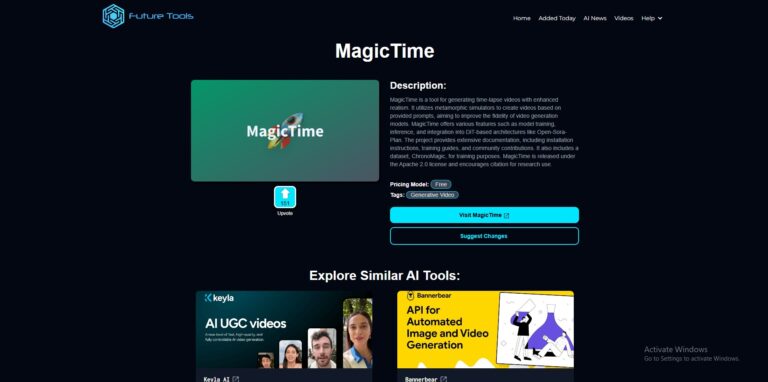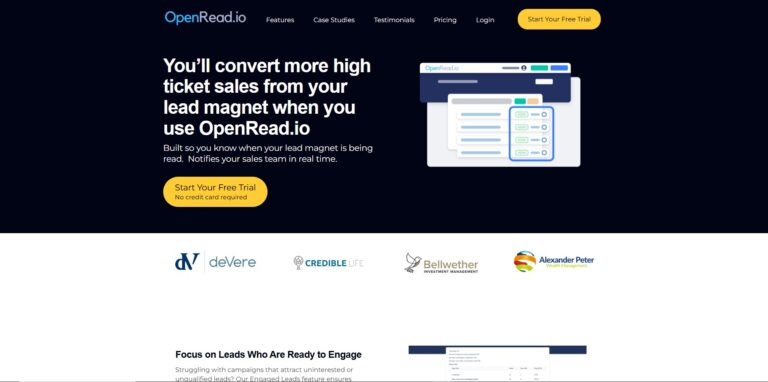UserTesting AI: Revolutionizing UX Research with Artificial Intelligence
In the present and interconnected environment where we live, good UX is at the top of every business owner’s wish list. One of the main aspects of designing for the digital environment is recognizing how people approach products and services and attempting to define their needs and estimations. Then there is the emerging UserTesting AI which is a modern facility for UX research that uses artificial intelligence.
UserTesting AI was created for use by several kinds of users out of the lot, the primary users would be the UX designers, researchers, and even the marketing and product teams. The platform aims to simplify and hasten the process of compiling and analyzing the information gathered from users for improved decision-making through enhanced data-driven decisions enabled by research technologies.
UserTesting AI automatically synthesize large quantities of video, text, and behavioural data into the discovery of patterns; identification of pain points; and actionable insights. All this powerful capability in AI equips businesses with the knowledge that can help dig deeper into how users interact and make their way through products or services, accelerating a new level of excellence in product innovation. Identify specific moments of friction in a user’s journey and overall sentiment on a new feature- UserTesting AI gets that done.
Key Features of UserTesting AI
UserTesting AI has a complete set of features that are intended to make the UX research process more efficient. These features save time and bring out insights that might otherwise have gone unnoticed. Below are some of the stand-out features that make this platform special:
1. AI Insight Summary
One of the most powerful tools within UserTesting AI is the AI Insight Summary. It synthesizes data from various sources—video interviews, text feedback, and behavioural metrics—and distils it into succinct summaries of key learnings. Teams no longer have to manually sift through hours of user session recordings; instead, the platform highlights the most critical information, allowing researchers to focus on interpretation and strategy.
2. Friction Detection
Friction Detection: This feature will help determine friction points in digital interaction. Be it a website not easy to navigate, a form that is too cumbersome to fill up, or an unclear feature; UserTesting AI automatically points to these problems. The detection of friction points means the platform aids teams in making improvements where changes can make a difference to the user’s experience.
3. Sentiment Analysis
The essence of effective UX research is to understand user sentiment. UserTesting AI uses advanced algorithms in sentiment analysis to capture moments of positive and negative sentiment during user sessions. This gives valuable context on how users feel during specific interactions, enabling teams to address concerns and amplify aspects of the experience that users enjoy.
4. Domain-Specific Datasets
UserTesting AI uses proprietary, domain-specific datasets to create rich insights for multiple industries. This dataset improves the insights’ accuracy and relevance, allowing businesses to have actionable recommendations tailored to their individual goals.
Benefits of UserTesting AI
The benefits of UserTesting AI are numerous, which makes it a very valuable tool for teams looking to optimize their UX research processes. Some of the most notable benefits are as follows:
1. Efficient Research
It is time-consuming and laborious to manually examine user data. UserTesting AI automates redundant tasks, like data tagging, transcription, and pattern recognition, so teams are free to spend their time on more valuable work. This increases the efficiency through which organizations can run more tests and analyze the results faster.
2. Speedy Insight Generation
The AI-powered tools in UserTesting AI extract key insights promptly from big data and thus derive actionable findings in a more minimalistic time than would take using other methods. Such speed is particularly helpful for businesses operating in competitive markets, as they rely on time insight to determine whether they will succeed or fail.
3. Scalability
As organizational size increases, so does the demand for UX research in the organizations. UserTesting AI provides the surety that is needed when working at ma assive scale, allowing the teams to focus on the quality of the insights they develop. Due to its capacity to process large quantities of information, it is seen more as a reliable companion to the companies.
4. Commitment to AI Innovation
UserTesting AI captures the company’s focus on artificial intelligence, which began in 2019. This continuous investment in innovation helps to keep the platform as one of the leading tools in AI-powered research of user experience.
Cons of UserTesting AI
While UserTesting AI offers numerous benefits, it’s essential to consider its potential drawbacks to ensure it’s the right fit for your team.
1. Complexity for New Users
But probably it may be too overloaded with features for new users who are not accustomed to working with AI-based platforms. Since it is fully loaded, the learning slope is reasonable with relevant training, but common users can be overwhelmed especially when handling all aspects of the appliance at once.
2. Overreliance on AI
Despite the high level of sophistication of the AI tools in UserTesting AI, teams can get very dependent on it and end up missing out on complex signals that need deeper analysis by an analyst. What has become compelling is for there to be a ggive-and-takebetween the use of AI in automation and the use of human insight in touch with contextual and nuanced considerations.
3. Data Privacy Concerns
It involves privacy and security, especially regarding any system where user information gets processed. Protecting private details and fulfilling various data protection legal requirements can form top priorities using the UserTesting AI.
What Sets UserTesting AI Apart
UserTesting AI is not just a research power instrument; it is an innovation for organizations that need to go to the next level of discovering the manner in which users operate. It can generate insights from multiple sources of data autonomously, establish connections and present recommendations, this considerably decreases the time taken to carry out UX research, and enhances the quality of findings.
The features incorporated in this platform include AI Insight Summary, Friction Detection and Sentiment Analysis to ensure that businesses understand the user pain and digital touchpoints. As such, this solution will be flexible, and oven and have dedicated datasets for overall advantages for businesses of all sizes across all possible fields.
As with any tool, UserTesting AI is most effective to be used intentionally and, therefore, should be approached as such. It is essential that teams use their knowledge in addition to what they gather to assist in focusing on the desires of a user. Also, optimizing such measures will reduce likely concerns and give comfort to the users of the application.
Conclusion
In a world where user experience defines a brand or becomes a major downfall, UserTesting AI takes the novel to new heights as the perfect booster for businesses in delivering user satisfaction. Providing assistance with everyday repetitive tasks, as well as in-depth and meaningful analysis the platform enables teams to provide the best of the digital world. The general positive findings suggest that even though there is a learning curve to it and requires proper data privacy contemplation it should not prevent the fact that the benefits greatly outweigh the challenges.
With UserTesting AI, businesses can automate many aspects of their UX research process, find insights more efficiently, and make better decisions that help them grow. For the experienced UX researcher or the new marketer who wants to step into the world of user research, this platform should be a no brainer addition to your tool kit.




